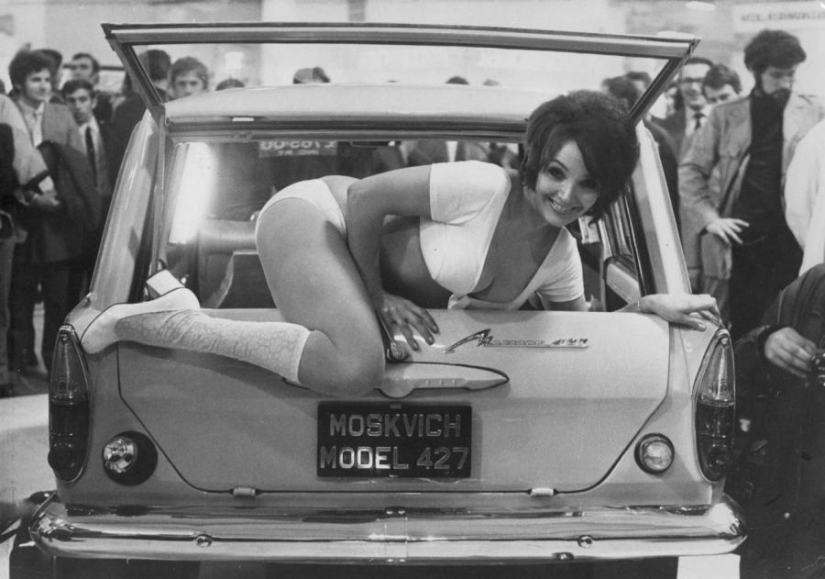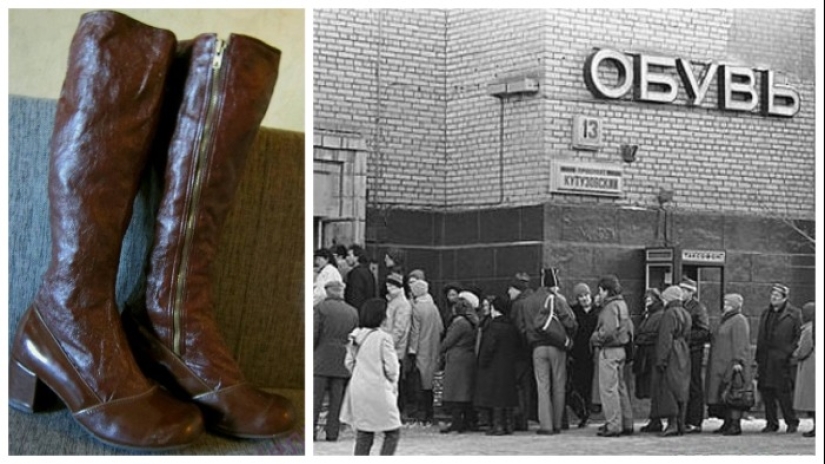10 scarce goods that Soviet citizens tried to "get" in any way
Categories: History
By Pictolic https://pictolic.com/article/10-scarce-goods-that-soviet-citizens-tried-to-get-in-any-way.htmlToday, due to a small queue in the store, you can angrily demand to open an additional cash register. Soviet citizens patiently stood in line to buy scarce goods. They took it indiscriminately, without looking at the size and style, terribly envious of the lucky ones leaving the store with the coveted goods in their hands. We suggest recalling a dozen products that were in terrible shortage in the Soviet Union.

Every self-respecting hostess aspired to have imported enameled basins of different formats in the house. It was extremely difficult to buy them. In the 80s, a real hunt was conducted for them. It was considered a great success to be in a store where they were "thrown out" for sale.

At that time, it was considered quite normal to meet a decently dressed woman on the street with a brand-new basin in her hands. Passers-by, hoping for luck, were necessarily interested in where they managed to "get" a scarce product.
Today it seems incredible to find a lack of toilet paper in the house. In the Soviet Union of the 60s and later, this hygiene item was in short supply. Toilet paper was not included in the list of essential goods and was produced in insufficient volume. If it was possible to get into the store at the time of the "ejection" of toilet paper, then a huge queue quickly formed. Each customer could purchase only a limited number of packages.

Happy buyers faced the problem of transportation. There were no plastic bags as such. In the absence of a string bag, toilet paper was strung on a rope, which was hung on the chest like a machine gun tape. A walk to the house with such an ornament was not considered shameful. On the contrary, passers-by were in a hurry to find out which store "threw out" the deficit.
Of course, customers were upset if the goods ran out before their turn came. Although Soviet citizens were not discouraged, because they learned to compensate for the shortage of toilet paper. Instead, there was a neat stack of newspapers in the toilet. By the way, this is where the expression "I'll go and read" arose, which implied the need to relieve myself.
Although Soviet people were convinced that a car was not a luxury item, many thought otherwise. Despite the considerable cost of the car, its purchase was fraught with obstacles of a different nature. The cars were distributed to enterprises. Those wishing to purchase a vehicle had to make an application in advance to be included in the queue.

The distribution of cars among the working collective could occur in different ways: by the decision of the trade union committee or in turn. Anyway, the availability of money did not imply a quick purchase of a car. Sometimes you could stand in line for a car for several years. Of course, there was also a black market. But there were completely different prices — a used car was much more expensive than a new one.
The Soviet people were the most reading nation in the world. But this did not mean the availability of interesting books. Queues under bookstores gathered even before the goods were delivered. Many, hoping to "snatch" detective or adventure works, were on duty all night. Science fiction was in even greater short supply. Collected works were considered the pinnacle of dreams.

Sometimes scarce novels could be purchased with a coupon, which was given in exchange for waste paper. The coupon indicated a specific work. It was also possible to subscribe to "Full Meetings", which was very difficult. It was necessary to take a queue to get among the first visitors. The subscription was not issued every day.
However, special requirements were imposed on the volumes of the collections. Practically no one has read the "Complete Collections". They were bought to decorate the interior. The most successful acquisition were volumes of brown, burgundy shades. Dark green volumes were instantly sold out. Multi-volume collections of works with blue covers sold out much worse.
In the 1970s, imported stocking boots came into fashion. Every Soviet woman dreamed of getting a cherished pair of boots imported from Bulgaria, Hungary, Yugoslavia, Czechoslovakia. If boots-stockings were "thrown out" for sale, then the ladies bought without looking at the size. If there was a larger pair, it was not considered a problem. Cotton wool was placed in a sock, a newspaper was worn like that. We tried to exchange a small size here, having found the same owner of an unsuitable size.

If it was not possible to exchange, then they wore boots at home. There were a huge variety of recipes for how to carry boots. For example, several pairs of socks were put on, shoes were lubricated with glycerin. The most desperate ladies heated the new thing over steam, and then quickly put it on the leg.
Travel, ladies', sports bags were also in huge short supply. Often, unsightly samples of the similarity of bags were piled up in the window. But it was considered impossible to buy a real vinyl bag with the Aeroflot logo. Usually they were distributed through trade union organizations. There have always been several times more willing. Therefore, the girls were offered to draw lots.

Stores offered customers unsightly suits of outdated style. It was almost impossible to "get" high-quality and fashionable products. Then Soviet citizens found a way to replenish the wardrobe with a fashionable suit. It was necessary to submit documents to the registry office and get a coupon to a special store for newlyweds.

The range of the salon was much wider, and the quality of the goods was incomparably higher. Special stores offered shoes, clothes, underwear. The girls willingly agreed to pull off such an event. After receiving a certificate from the registry office, she got the opportunity to buy a limited number of imported underwear, a fashionable dress, high-quality shoes. Later it was discovered that the young people decided to postpone marriage.
The shortage of the 80s affected many foods. Soviet citizens "hunted" for caviar all year round. They bought any one they could find, even black, even red. A scarce jar of caviar was considered a very valuable present. It was given when they came to visit. Well, if you needed to express hospitality by setting a rich table, then sandwiches with caviar were most welcome.

In addition, Soviet citizens, going on a tourist or business trip abroad, tried to take a few jars of caviar with them. It was easy to sell them abroad, replenishing the meager budget of the currency to buy a fashionable sheepskin coat or scarce electronics.
Everyone has heard about the benefits of buckwheat porridge. Today we have the opportunity to buy it at least every day in any quantity. In the Soviet Union, buckwheat was rarely found in the store. She was stable only in specialized departments for diabetics. Patients received special books that gave the right to purchase dietary products. The store employee noted the purchase information in the book.

If, for some reason, a product released for export turned out to be in the store, then it was instantly snapped up. Products with the label "made in USSR" were distinguished by reliability and high quality. Usually such goods were intended for a foreign buyer and differed from analogues from the domestic market for the better. If an export product turned out to be "thrown out" for sale, then there was a crush and a huge queue in the store.

Of course, the list of scarce goods of the Soviet Union cannot be complete without Indian tea, Brazilian coffee, tin lids, color televisions and kitchen sets. Living in conditions of widespread scarcity, Soviet people mastered the art of making "necessary" acquaintances, developed endurance by standing in long queues. Excitement and stress paid off with the joy of acquisition and a sense of superiority over less fortunate compatriots.
Recent articles

While the sun practically disappeared from the sky above the Arctic Circle and the night seemed endless, the Vikings prepared to ...

This is for us, people, the New Year is one of the most important holidays of the year. But for animals, it's all a fuss, running ...

If it seems to you that the New Year holidays are being celebrated somehow incorrectly, then you definitely haven't seen these ...